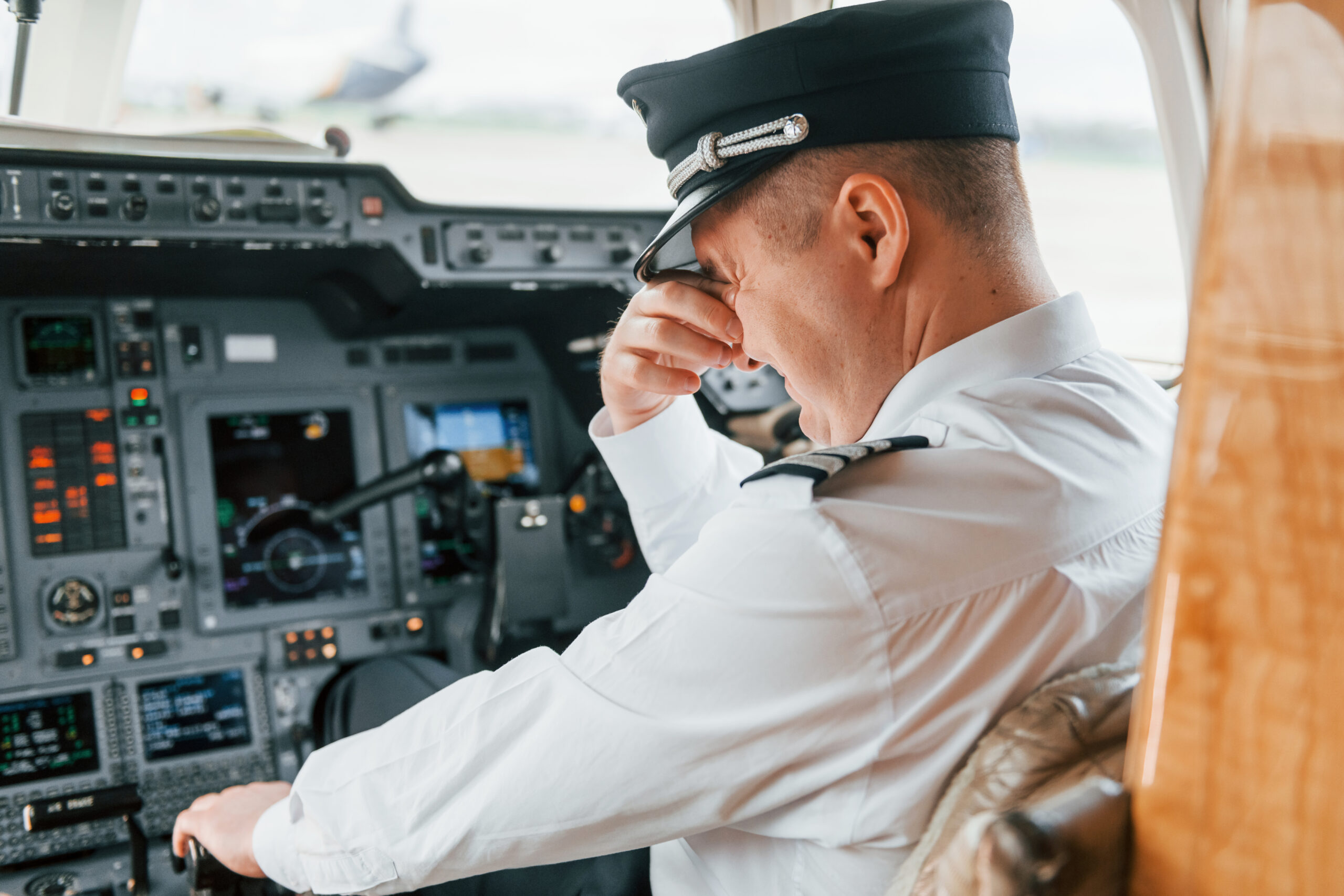It was a red-eye flight over the Atlantic when Captain James (name changed for privacy) first noticed that the persistent anxiety and sleepless nights he had been struggling with were becoming dangerous. He found himself repeatedly checking instruments and unable to focus on the flight plan, yet feared seeking help because disclosing mental health concerns could ground him indefinitely. This situation is far from unique; pilots, cabin crew and maintenance engineers routinely experience high stress, fatigue, and psychological strain but are often reluctant to speak out. Fear of career repercussions, stigma, and regulatory penalties creates a culture of silence that is far from beneficial in the long term. This article explores why aviation professionals remain hesitant to discuss mental health, what the research tells us, and how the industry can better support its workforce while safeguarding safety.
The Scale of the Issue
In the early days of aviation, focus was primarily on physical health and skill proficiency, with mental health typically a topic surrounded by silence. However, empirical research and industry surveys show us that work-related stress has biological, social, and psychological impacts. A study published in 2021 showed that 50% of respondents experienced psychological distress, 60% experienced loneliness and 75% of respondents experienced sleep difficulty.
A range of factors often come into play; pilots fear that should they disclose that they are experiencing difficulty, they will be grounded and prevented from flying, and this can lead to further personal problems. Culturally, aviation has an air of toughness and therefore values completing the task at hand no matter what. Under these circumstances, asking for help can still be perceived as weakness.
It’s not only pilots that experience these issues; cabin crew are also prone to elevated rates of fatigue, poor sleep quality, anxiety and depression, all factors linked to irregular rosters, night work and time-zone transitions. Similarly, maintenance engineers and air traffic controllers also face heightened risks with long shifts, pressure to perform, and sleep disruptions that correlate with fatigue and associated mental stress.
A 2016 report showed that 12.6 percent of those surveyed met the clinical depression threshold and 4.1% reported having suicidal thoughts. Another study published in 2018 showed that 40% experienced high burnout. This data reveals that among aviation workers, the prevalence of anxiety or depression symptoms may be comparable to or slightly higher than in the general working population. Thus, the magnitude of potential mental health risk is clear and does not discriminate purely by role. Across the board, aviation professionals face measurable psychological loads.
Why People Stay Silent
Many aviation professionals refrain from discussing mental health issues because of the belief that disclosure carries professional risk. The certification systems for pilots and aircrew emphasise “fit-to-fly” status, and any psychological diagnosis may trigger extended medical evaluation, grounding, or licence suspension. This creates a powerful deterrent where the individual must weigh the cost of seeking help against the risk of career disruption.
Moreover, the fear of losing earnings, seniority, or future job prospects intensifies the reluctance. When a crew member or engineer hears of a peer being sidelined because of mental-health treatment, the message is clear. Not only might they lose flying time, but they might suffer a knock-on effect on contract renewals or future assignments. In summary, the system inadvertently encourages hiding symptoms rather than seeking early intervention.
Operational Stressors
Beyond regulatory and career-based pressures, the very nature of aviation work gives rise to conditions that increase psychological vulnerability. Irregular hours, long duty periods, frequent time-zone changes and night-flying all disrupt circadian rhythms, degrade sleep quality and elevate fatigue. Research links these types of operational stressors to elevated rates of anxiety and depression among crews. For instance, in a study of active pilots during the COVID-19 period, over one-third exhibited symptoms consistent with a diagnosable mental-health disorder.
For cabin crew, role conflict is another major stressor; the crew must manage safety demands while also engaging in commercially orientated service, sometimes dealing with aggressive passengers or in-flight emergencies. These dual pressures increase emotional load and risk of trauma or burnout. Maintenance engineers are similarly exposed, with fatigue, compressed rostering and human-factor pressures leading to diminished resilience and a higher chance of error. Thus, the operational environment has many key elements that could create vulnerability, and the lack of open disclosure exacerbates risk.

Invisible Barrier
Even when organisations adopt policies intended to support mental health, cultural and peer-norm factors can undermine their effectiveness. Aviation professionals often internalise the expectation of being calm, composed and always “on-duty ready.” Disclosure of emotional or psychological distress may be viewed as weakness or a threat to safety credentials. The result is that, despite the availability of programmes, uptake remains limited. Studies of peer-support uptake among pilots found that while a safety-oriented culture increased likelihood of seeking help, symptoms of depression and anxiety still reduced approach rates.
Changing culture requires visible leadership endorsement and confidentiality assurances. In our recent AERVIVA podcast, Mental Health Matters in Aviation we sat down with psychologist Krešimir V, who highlighted the importance of having a highly visible person within a company to promote mental health. This person should be of seniority to encourage their peers to take care of their mental health in the same way they would their physical health, i.e. before they become sick.
Recent Policy Shifts and Industry Responses
Regulators within the aviation industry have initiated policy and operational shifts. The Federal Aviation Administration (FAA) has reviewed its framework on pilot psychological fitness and released a report recommending mechanisms that promote help-seeking while safeguarding safety. At the same time, industry bodies have integrated mental health and human factors programmes into existing Safety Management Systems (SMS), viewing wellbeing as a safety enabler rather than a separate issue. For example, peer-assistance programmes, fatigue-risk management systems and confidentiality-protected clinical pathways are increasingly recommended. The shift from “You must hide to fly” towards “You can seek help and still fly” is essential for both safety and wellbeing.
Peer support programmes (PSP’s) are particularly beneficial; these are confidential systems within airlines or aviation organisations that allow pilots, cabin crew, and engineers to seek psychological support from trained colleagues without fear of losing their job or licence, therefore providing a structured, compassionate pathway for aviation professionals facing mental health challenges.
When a pilot, cabin crew member, or engineer is struggling, a trained peer supporter steps in to advocate on their behalf, coordinating with management to ensure the individual is temporarily removed from the roster for two or three weeks. During this period, the peer supporter maintains regular contact, checking in on their well-being and offering guidance, while the individual focuses on addressing their challenges. The process culminates in a formal “return to fly” procedure, ensuring the person is fully prepared, both mentally and physically, to resume their duties safely. Unlike approaches that sweep issues under the rug, peer support programs actively facilitate recovery, prioritize confidentiality, and embed wellbeing into the operational culture.
Mental health in aviation is fundamentally a safety issue. Airlines and maintenance organizations invest heavily in preventing technical problems with aircraft to ensure the safety of every flight. The same principle applied to the mental wellbeing of those in aviation. By proactively supporting mental health through programs such as peer support, companies reduce stress, fatigue-related errors, and sick leave. The result is not only a happier, more resilient workforce but also improved operational efficiency and cost savings. Recognizing mental health as integral to safety ensures that both people and planes are protected, creating a culture where wellbeing directly supports performance and operational reliability.
Key Takeaways
Mental health in aviation is a critical component of safety, performance, and workforce sustainability. Pilots, cabin crew, and engineers operate under intense operational pressures, regulatory scrutiny, and cultural expectations that in the past have often discouraged disclosure, yet these very pressures make proactive support essential. By integrating peer support programs, fatigue management strategies, and confidential clinical pathways, airlines and maintenance organizations can create environments where mental wellbeing is prioritized and not penalized.
Mindaugas Rainys, CEO of AERVIVA, emphasizes: “Our goal is to recognize the human behind the credentials. Supporting mental health is not just about wellbeing; it directly protects safety and ensures those in aviation can perform and feel at their best.”
When mental health is treated as a safety issue, the benefits are tangible: reduced errors, fewer fatigue-related incidents, lower sick leave, and a more resilient workforce. Ultimately, fostering a culture that values transparency, early intervention, and compassion ensures that the human beings responsible for keeping flights safe are themselves supported, thereby protecting both people and the planes they operate.

